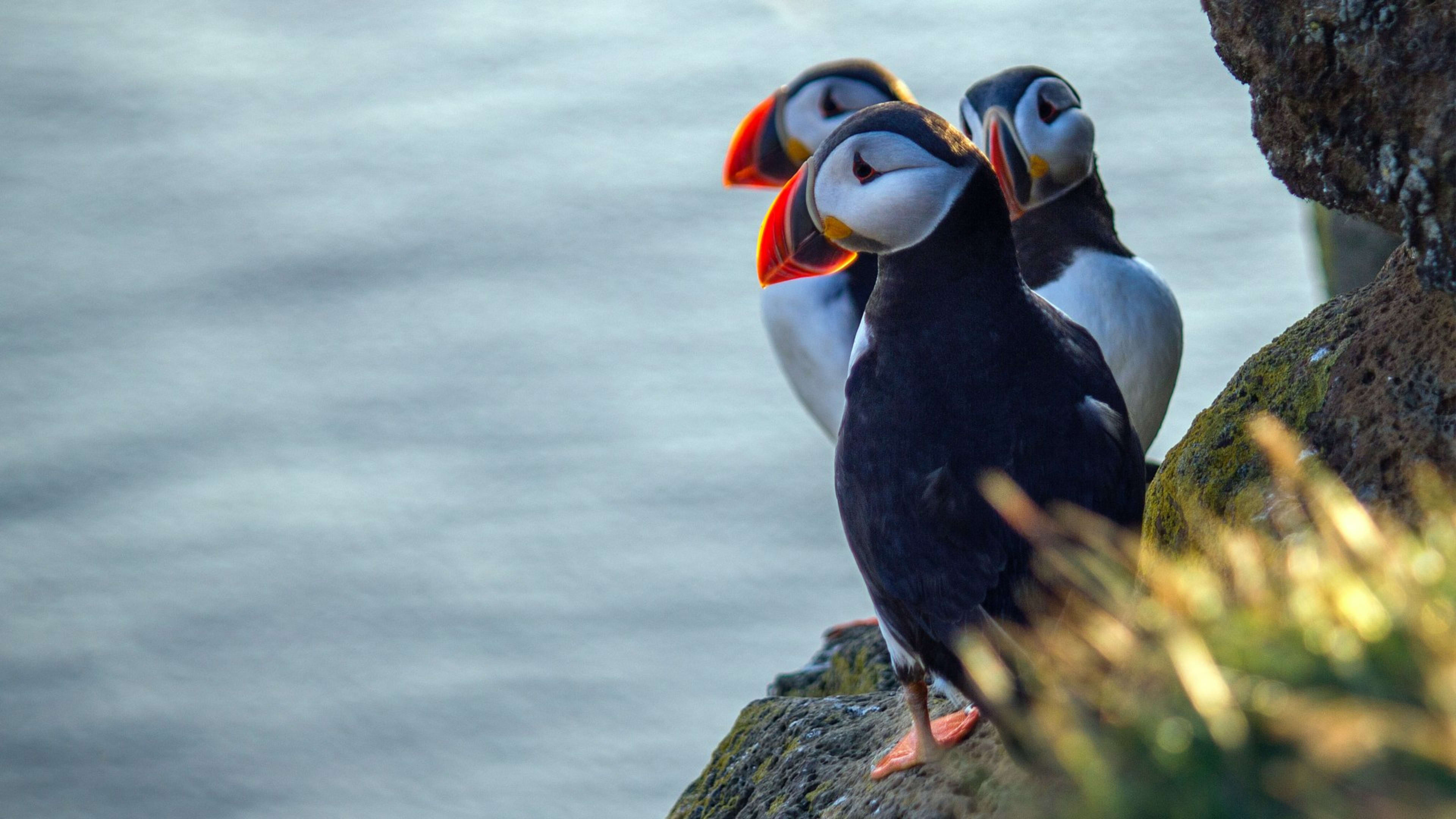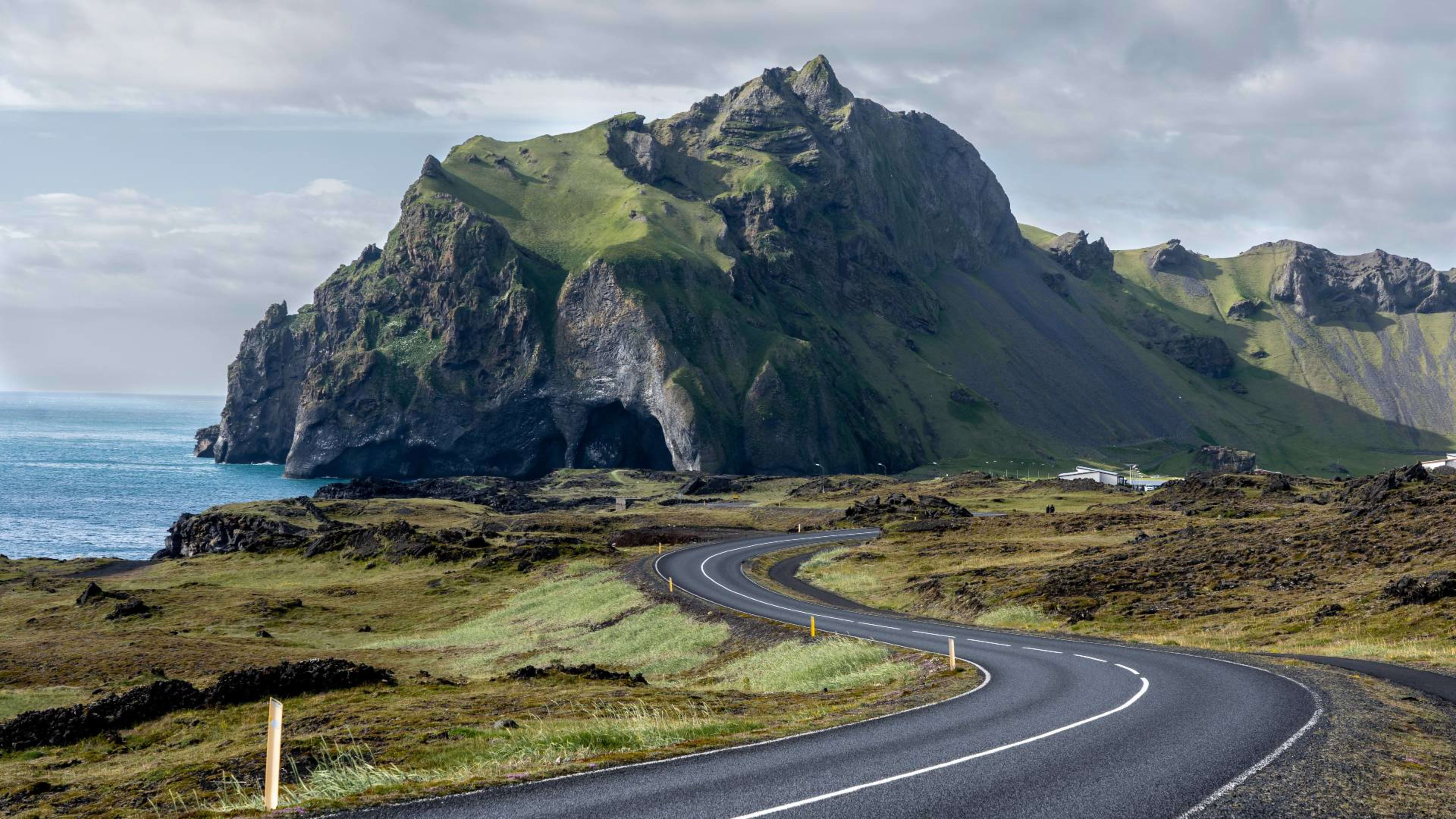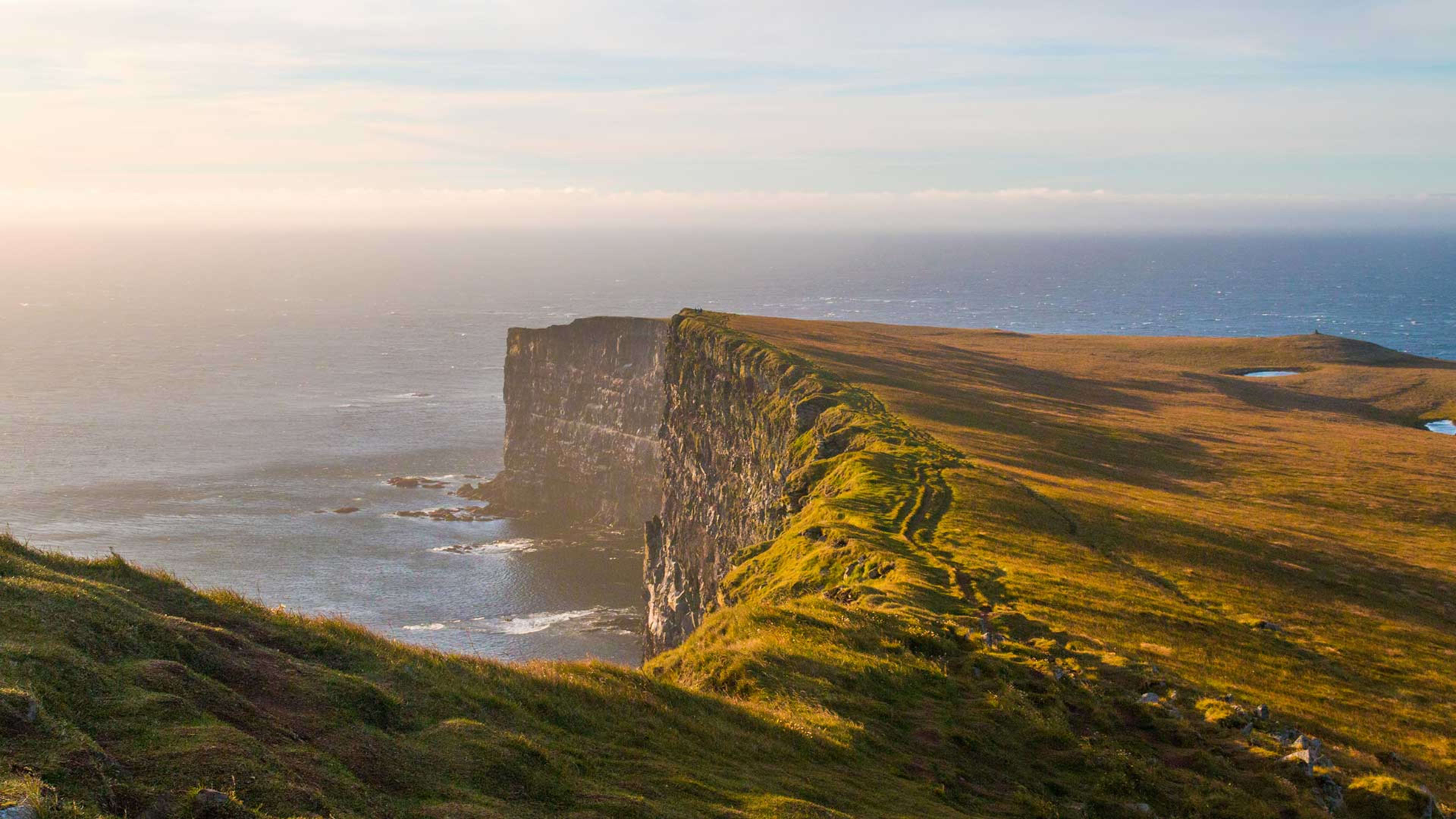Iceland has become a hugely popular destination for bird watching in the last few years. As ornithologists and recreational bird-watching enthusiasts alike have discovered the prime conditions and varied bird life on our Arctic island.
Around 85 different species nest regularly in Iceland, although around 330 have been recorded here since the settlement. Iceland also boast several spots all over the country tailor made for bird watching.
- See wonderful birdlife on a self-drive tour of Iceland.
Like the incredible Látrabjarg cliffs in the Westfjords, Lake Mývatn’s stunning scenery and multitude of species or just the Seltjarnarnes peninsula just outside of Reykjavík where birds nest among the golf course in spring. Here are some of the most popular and important birds you will spot (or not) in Iceland.

Lundi – Puffin
The puffin has become a bit of a national symbol in Iceland. The cute, cuddly bird has proven so popular with visitors that special puffin tours have been established so people can get up close and personal with them.
Around 8–10 million puffins inhabit Iceland and the largest puffin colony is in the Vestmannaeyjar Islands where the colorful birds have become a large part of life on the islands. The best time to see the puffins in Iceland is in the summer, between May and August and there’s no need to travel far as there is a puffin colony on a small island just outside of the Reykjavík harbor. Find out more about where to spot puffins on our blog.

Kría – Arctic tern
This migratory bird can be found all over Iceland where they spend the summer after flying all the way from Antarctica where they spend the winter. The Arctic tern has the longest migratory pattern of any animal in the world, flying over 70,000 km (45,000 mi) to reach their nesting place. The terns are fiercely protective over their nest and do not hesitate attacking humans who come too close.
If you find yourself walking through an Arctic tern nesting area it’s always a good idea to carry a long stick to hold above your head as the tern will always attack the highest spot. The Arctic tern lays from one to three eggs and, like good 21st century parents both sexes share in the hatching duties.

Skúmur – Great skua
Another bird that likes to protect its nest with violent attacks on anyone that dares come too close is the great skua. While not exactly life-threatening there are stories of these strong birds are known to hit people hard over the head with their wings, which can be surprisingly painful.
The great skua is most often seen on the sands of the south Iceland and east Iceland, like at the famous Jökulsárlón glacier lagoon, where it hunts for sandeels and other sea creatures. Aside from Iceland the great skua mostly nests on the Scottish Islands and the Faroe Islands.
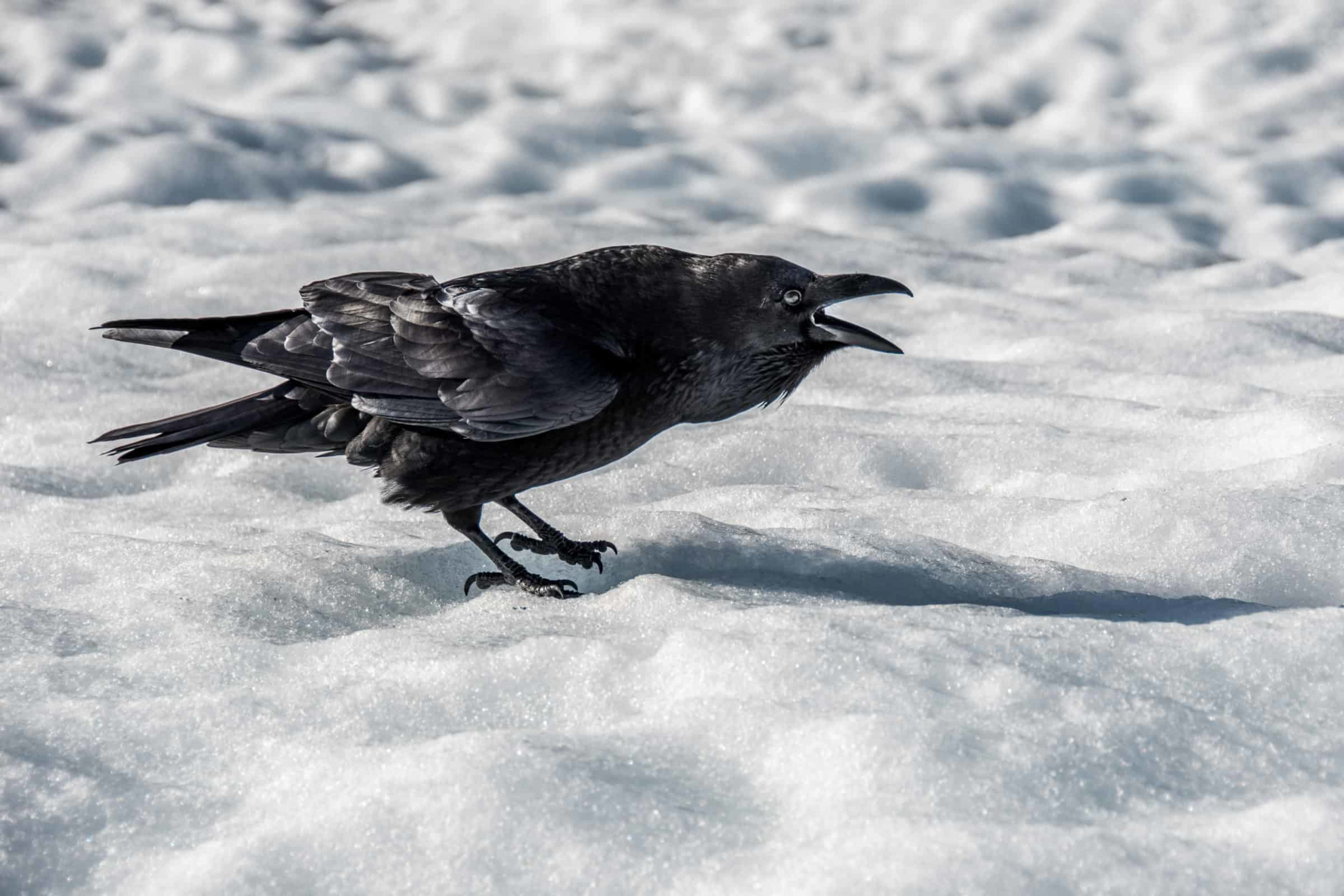
Hrafn – Raven
The raven has always been very meaningful to the Icelandic people. From the Norse mythology where they serve as Óðinn’s messengers, bringing him news from all over the worlds, to the first settler Hrafna-Flóki who sent his three ravens ahead to guide his ship to shore on this new land.
Ravens also play a role in the Icelandic folklore. It is said that they congregate twice a year, in spring and fall, where they decide whether they’re going to be naughty or nice that year. It is not thought to be a good sign to hear ravens crow near a farm, people thought they were ghosts and they were referred to as night ravens. Ravens also play a big part in spells and any sort of magical ceremonies.
The raven is a stay bird in Iceland and there are thought to be about 2,500 nesting pairs in the country. The raven mates for life and will return to its nesting place year after year.
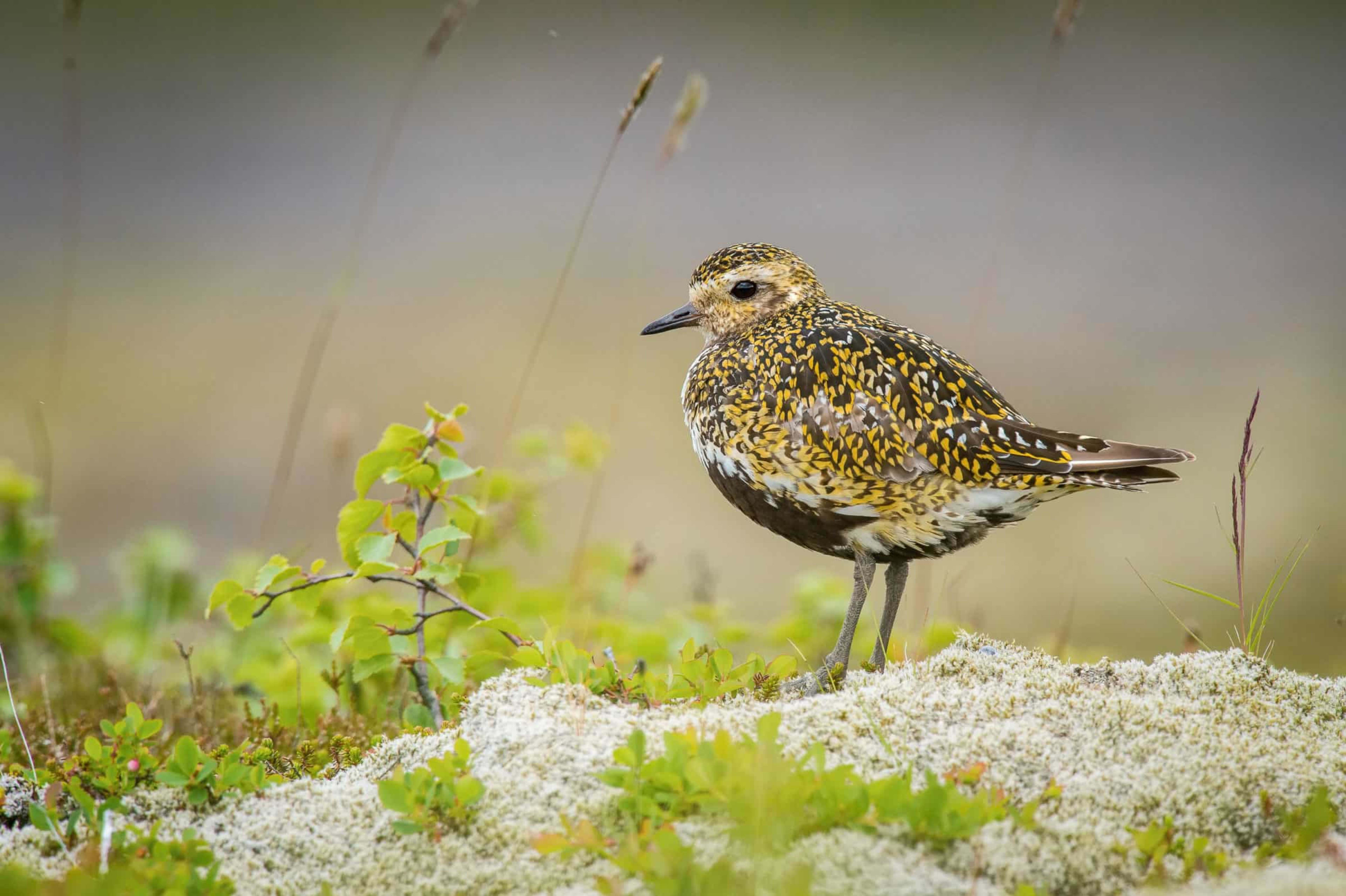
Lóa – European golden plover
The golden plover has a special place in the hearts of the Icelandic people as its arrival in the country is said to herald the arrival of spring by singing away the snow. The first sighting of the plover is reported in the news and lifts the hearts of a weary nation after a long winter. Songs and poems have been written to honor this bird and the name Lóa is popular among Icelandic women.
This small bird is quite thickset and its most distinguishing feature is the white, S-shaped band stretching from its forehead to its flank. The plovers monosyllabic, slightly melancholic call, a sort of “tuuu” is a common sound in the Icelandic countryside during summer
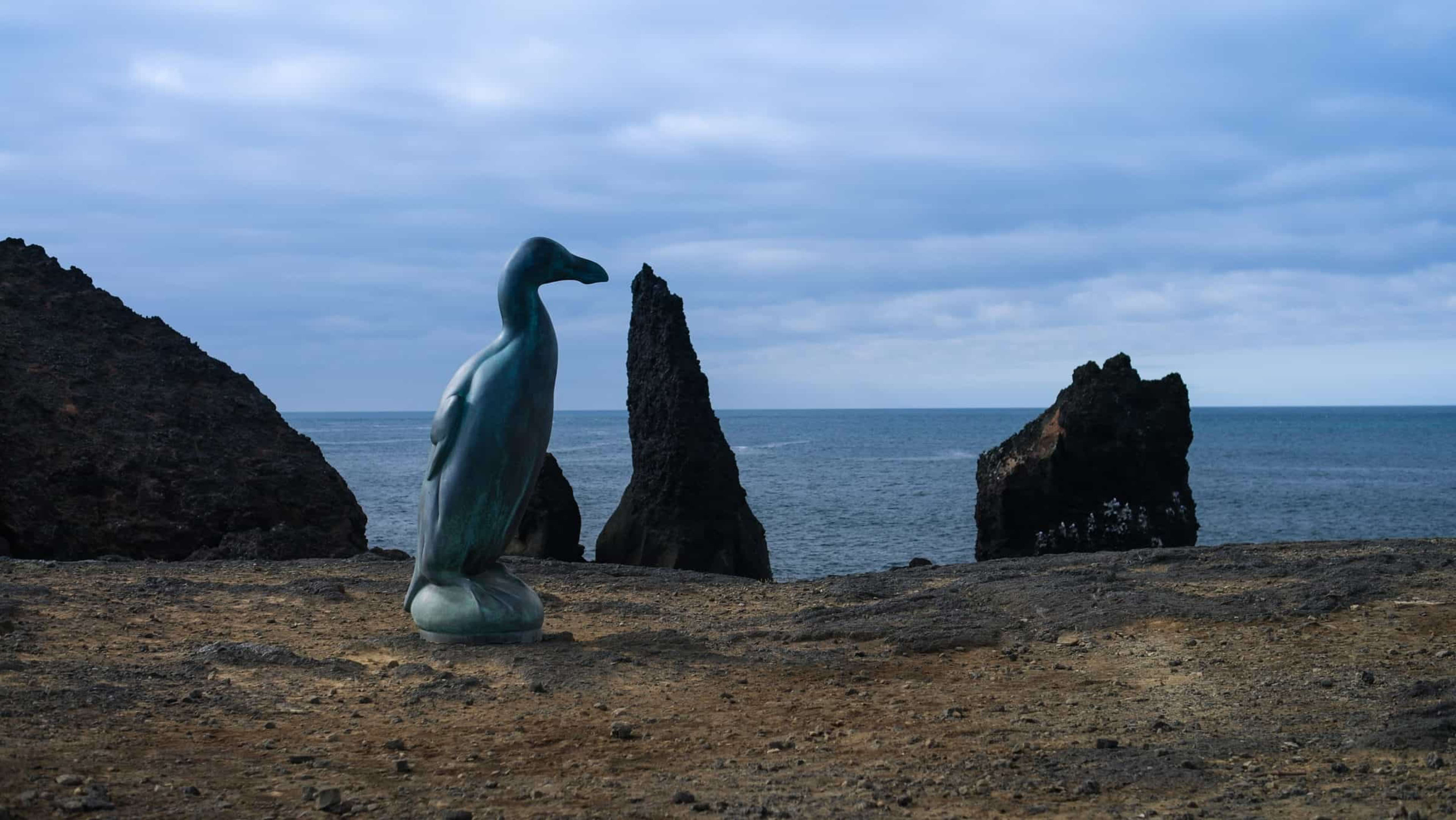
Geirfugl – Great auk
The only bird on this list you are not likely to encounter in Iceland. Or, in fact, anywhere in the world since the great auk went extinct in the mid-19th century. A species of flightless alcid, more related to the puffin than the similar looking penguin, the Great Auk is thought to have numbered from a few hundred to a few thousand in Iceland.
The last known pair in the world was sadly killed in Eldey, a small island off the coast of the Reykjanes peninsula, in 1844 therefore ending the last known breeding attempt. The great auk’s fate has become a reminder to the Icelandic people to take better care of the nature and wildlife we have been entrusted with and it is very important to us that history not repeat itself.
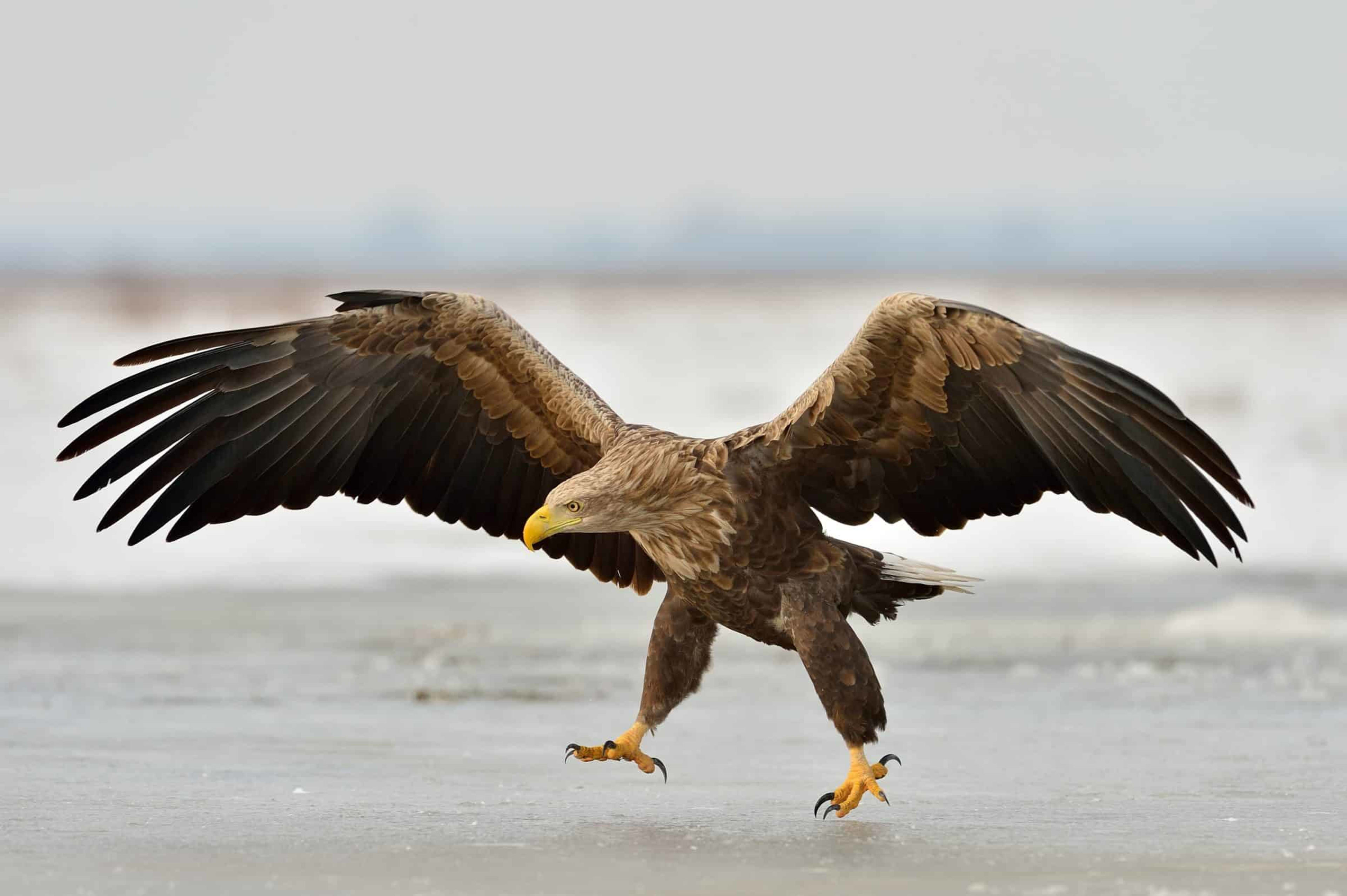
Haförn – White-tailed eagle
The white-tailed eagle was once almost extinct in Europe but dedicated conservation efforts have managed to almost rebuild the population and the white-tailed eagle is now a protected species in Iceland.
Still a rare sight, this majestic bird likes to live close to large bodies of water, hence the Icelandic name which means ‘sea eagle’. There are just over 70 eagle pairs in Iceland and most of them reside in the beautiful Breiðafjörður where you can sail among the numerous islands and try and spot them. The white-tailed eagle mates for life and if one partner dies it can take the other years to find another.
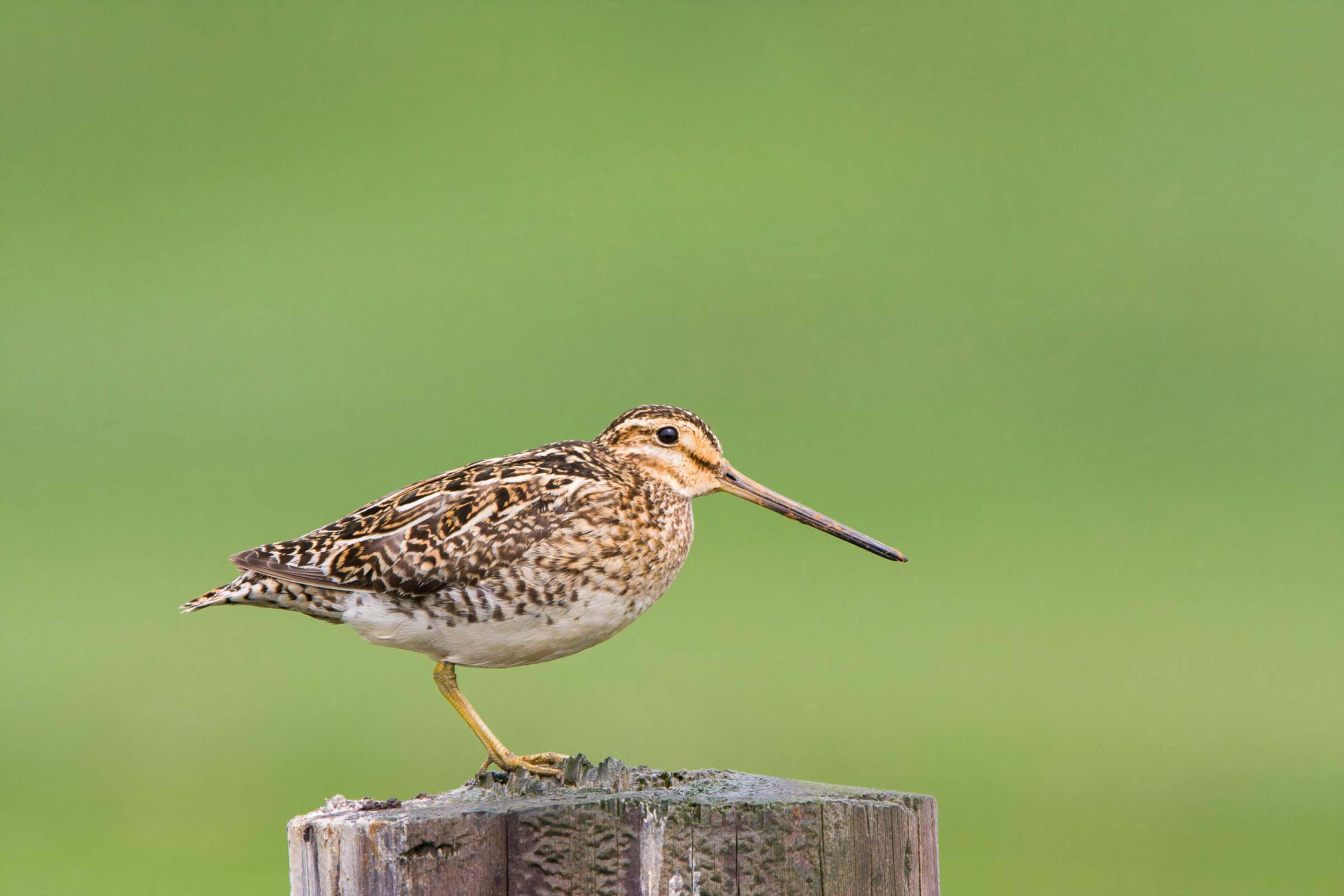
Hrossagaukur – Common snipe
If you’ve been traveling in the Icelandic countryside you will most definitely have heard the distinctive call of the common snipe that almost sounds like a horse neighing. The bird is instantly recognizable by its long, sharp beak but you need to get close to spot them as the snipe is usually shy and conceals itself close to the ground where it forages in the mood for worms and insects.
In Icelandic folklore the common snipe is thought to have predictive abilities and you had to pay attention to where the sound of the first common snipe in spring was coming from. If it came from the east or south it meant good luck, but if you heard it from the west or north you were in trouble.

Rjúpa – Rock ptarmigan
This medium-sized game bird plays a huge role in the traditional Icelandic Christmas, where they are boiled and served with fresh potatoes and sauce for Christmas dinner. The rock ptarmigan is notable for its adaptable plumage, as the bird changes its feathers three times a year.
During summer and fall the ptarmigan is brown, but turns bright white in winter and in July it sheds its tail and flight feathers completely. The ptarmigan feeds on birch buds and various mountain leaves and flowers which is said to give it its spicy, gamy taste. Hunting is restricted and carefully monitored.

Starri – Common starling
The common starling is indeed very common in Iceland and in the spring it is not unusual for people in towns and cities to find a starling nest somewhere around their roofs and balconies. The starling is a very musical bird and it’s song replaces most alarm clocks for sleepy Icelanders when they are in mating and nesting mode.
The starling is also a gifted mimic and will reproduce other bird calls and even more urban sounds that they have heard. The females seem to prefer the males with a more complex song, something anyone that prefers Childish Gambino over Justin Bieber can relate to.
Starlings are seen as both a blessing and a curse since they eat insects like spiders and flies but they also have lice that can be transmitted to humans if they get too close.


